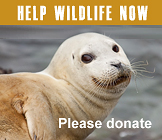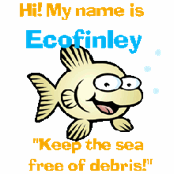haulout
Seal pupping season now underway on Washington's outer coast
May/25/15 08:00 PM
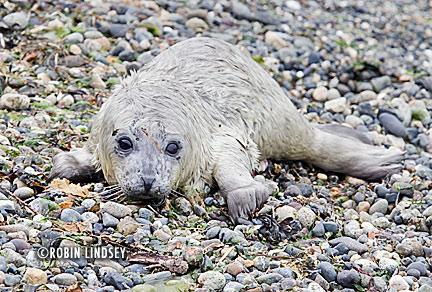
Seal Sitters has also received a report of a live lanugo birth in a South Puget Sound island rookery. Inside the womb, pups have a wavy white coat known as lanugo. For a full-term pup, this long fur is shed before birth. If a pup is born prematurely (with a partial or full lanugo coat), his muscles and lungs will not be fully developed and survival rate is extremely low. The amount of lanugo fur indicates the stage of prematurity.
The photo shown here is of lanugo pup Luigi, born last June on West Seattle’s Alki Beach. A man with a dog was on the beach next to the pup when Seal Sitters first responders arrived. After convincing him he was jeopardizing the survival of the pup, responders cleared the beach and established an extensive tape perimeter, restricting access to the area in hopes that the pup’s mom might return. She was not seen again. A full month premature and weighing only 5.5 kg, she had to be humanely euthanized after 2 days.
At the South Puget Sound rookery on Saturday, WDFW’s marine mammal biologist reports that a boat full of people illegally breached the closed harbor, speeding toward the seal colony where this latest lanugo pup had just been born. The frantic seals were scared from the haulout, leaving the premature pup alone. It is assumed the pup died due to abandonment. Photos of the boat with license number and occupants have been sent to NOAA’s Office for Law Enforcement (OLE) for investigation. If you witness harassment of seals or other marine mammals, a violation of the Marine Mammal Protection Act, please call the OLE Hotline at 1-800-853-1964.
PLEASE, stay back from harbor seal haulouts, where seals gather in numbers - especially during pupping season, now through the end of October in Washington State! It is truly a matter of life and death for seal pups. Observe quietly from a distance. For a map showing pupping timeframes in various parts of the state, click here.
Rash of illegal pickups of seal pups prompts investigations
Aug/01/14 06:01 AM
Harbor seal pupping season is well underway in South Puget Sound - and virtually all outer coast and inland Washington waterways. Seal haulouts are brimming with harbor seal moms and pups. Nursing age and newly weaned pups are resting along our shorelines, both in rural and urban areas. The West Coast Marine Mammal Stranding Network across the Pacific Northwest does our best to spread the word to “leave seal pups alone”. However, each season brings with it more cases of human interference, too often with drastic consequences for the animals.
Don’t touch seal pups - it is a violation of Federal and State Law. All marine mammals are protected from harassment by both the Federal Marine Mammal Protection Act (punishable by fines up to $10,000 and one year in jail) and Washington State law RCW 77.15.130 (a criminal misdemeanor, mandatory court appearance, punishable with up to 90 days in jail and up to $1000 fine).
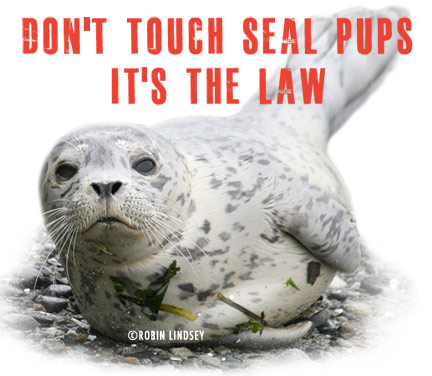 Recently, there has been a rash of illegal pickups and handling of harbor seals. In one case, a pup was wrapped in a blanket, causing him to overheat and die. In another incident, human interference caused abandonment and the pup was forced into a rehab facility.
Recently, there has been a rash of illegal pickups and handling of harbor seals. In one case, a pup was wrapped in a blanket, causing him to overheat and die. In another incident, human interference caused abandonment and the pup was forced into a rehab facility.
These cases and others are being investigated for prosecution by NOAA Office for Law Enforcement and Washington Department of Fish and Wildlife Enforcement.
COMMON MISTAKES THAT CAN RESULT IN HARM TO SEAL PUPS (AND ARE UNDER PENALTY OF LAW):
We can’t stress enough that while pups may look vulnerable alone on the beach, be assured that most likely there is no cause for alarm. If a pup is not strong enough to swim for great lengths, he sometimes rests onshore while mom observes from the waters nearby. Because there is no mom in sight does not mean the pup is abandoned. Stay back and observe quietly from a distance. Keep dogs leashed and away. Adult seals are wary and any perceived threat or disturbance by humans and dogs can indeed cause abandonment. Respect seals’ space and share the shore by giving them a wide berth.
If you have concerns about the health or safety of a seal, call NOAA’s hotline @ 1-866-767-6114. For a seal pup (or other marine mammal) onshore in urban West Seattle, please call the Seal Sitters hotline @ 206-905- SEAL (7325).
Please click here to read NOAA’s “Share the Shore with Harbor Seal Pups” Public Service Announcement about seal pups - a clear and precise resource about their behavior, biology and NOAA’s rehabilitation policies.
Don’t touch seal pups - it is a violation of Federal and State Law. All marine mammals are protected from harassment by both the Federal Marine Mammal Protection Act (punishable by fines up to $10,000 and one year in jail) and Washington State law RCW 77.15.130 (a criminal misdemeanor, mandatory court appearance, punishable with up to 90 days in jail and up to $1000 fine).

These cases and others are being investigated for prosecution by NOAA Office for Law Enforcement and Washington Department of Fish and Wildlife Enforcement.
COMMON MISTAKES THAT CAN RESULT IN HARM TO SEAL PUPS (AND ARE UNDER PENALTY OF LAW):
- DON’T TOUCH. Seals, like all wild animals, can transmit disease to humans and dogs - and vice versa. A frightened animal will bite and can cause a serious bacterial infection.
- DON’T MOVE. A nursing pup will starve if mom cannot find her pup where she left him.
- DON’T FEED. A seal pup’s digestive system is designed for mom’s milk only while nursing (other foods can cause great harm - even after weaning).
- DON’T COVER. Wrapping in a blanket or cloth can cause brain damage and death as pups try to regulate their body temperature. Shivering is not uncommon.
- DON’T PUT PUPS BACK IN THE WATER. Seal pups need to rest and warm up out of the water. This is critical to their survival. All seals spend roughly 50% of their day on shore. Don’t worry about the tide - a pup can swim immediately after birth.
- DON’T LET DOGS NEAR SEAL PUPS. Disease can be transmitted. Disturbance can cause abandonment. Each year, dogs kill or seriously injure seal pups.
We can’t stress enough that while pups may look vulnerable alone on the beach, be assured that most likely there is no cause for alarm. If a pup is not strong enough to swim for great lengths, he sometimes rests onshore while mom observes from the waters nearby. Because there is no mom in sight does not mean the pup is abandoned. Stay back and observe quietly from a distance. Keep dogs leashed and away. Adult seals are wary and any perceived threat or disturbance by humans and dogs can indeed cause abandonment. Respect seals’ space and share the shore by giving them a wide berth.
If you have concerns about the health or safety of a seal, call NOAA’s hotline @ 1-866-767-6114. For a seal pup (or other marine mammal) onshore in urban West Seattle, please call the Seal Sitters hotline @ 206-905- SEAL (7325).
Please click here to read NOAA’s “Share the Shore with Harbor Seal Pups” Public Service Announcement about seal pups - a clear and precise resource about their behavior, biology and NOAA’s rehabilitation policies.
Premature pup Ali dies in peace on protected beach
Jun/25/14 06:30 AM
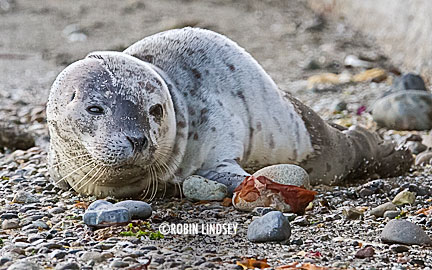
The premature pup originally sighted offshore on Friday, June 20th, worked his way a bit further south along the private stretch of Beach Drive and spent the past several days resting there under the watchful eye of neighbors and Seal Sitters first responders.
The thin pup died last evening. Abandoned by mom (circumstances unknown) and not meeting NOAA’s requirements for rehabilitation (read NOAA policy here), he was given the chance to rest and die in peace in on a quiet beach thanks to caring neighbors. Full-term seal pups have only a 50% chance of surviving their first year and survival rates of premature pups are greatly reduced in the wild. The beautiful little male pup, nicknamed Ali and a true fighter, was examined postmortem - photos of teeth will help our consulting marine mammal biologist estimate age.
Please check back for Seal Sitters' update as we receive more input from the biologist. Heartfelt thanks to everyone who so graciously allowed SS volunteers onto their property to observe and educate neighbors about this sweet little pup. It was a difficult and complicated situation for all involved.
Please contact Seal Sitters' hotline at 206-905-7325 (SEAL) if you have a marine mammal, dead or alive, on your beach.
Full-term harbor seal pups are just now being born in South Puget Sound area rookeries. View WDFW’s seal cam for a chance to see the pup born Monday evening, as well as lanugo pups at a protected harbor seal haulout. You might even get lucky and see a birth! By mid-July full-term pups will outnumber lanugos in the rookeries as seal pupping season will be in full swing in our area.
PUPDATE (June 26, 2014)
After review of photos, WDFW’s marine mammal biologist estimates that premature Ali was about a week old.
First seal pups of season born on Washington and Oregon coasts
May/02/14 05:35 PM
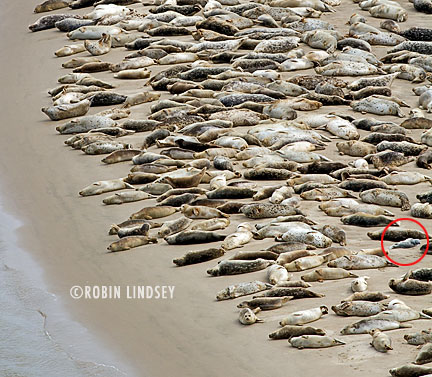
Haulouts, where seals gather in numbers throughout the year to rest and forage, become rookeries during seal pupping season (click here to view a map showing pupping season by region). Pregnant females seek safety in numbers to give birth and nurse their young. Yearlings, juveniles and adult males also gather at the rookeries during this time.
Before long, there will be lots of tiny pups calling out “maa-aa”, each with a unique voice so mom can find and nurse her hungry pup in the crowded, noisy colony. After the newborn pups have been weaned at 4-6 weeks old, adults mate. All of the seals (except the pups) then go through the molting process (shedding and growing a new fur coat), remaining onshore for more extended periods of time over the following weeks.
Sometimes, a pup will be seen away from a rookery - left alone onshore while mom forages. And not all pups are born in the relative safety of a busy haul out. If you come across a pup alone on the beach, stay back at all times (100 yards when possible) and observe quietly. Otherwise, due to human (or canine - always keep dogs leashed) interference, the mom may abandon her pup. If you have concerns that a seal pup may indeed be abandoned, please call the local stranding network for that area (click here for info). As the season progresses, weaned pups are quite often seen resting alone on shore. This is normal behavior as all seals need to rest and warm up for many hours a day. It is estimated that between 3,000 and 5,000 pups are born each year in Washington’s inland waters. However, only 50% will survive the first year.
Respect harbor seal haulouts - stay back! Disturbance has drastic consequences and can cause abandonment and starvation for newborn pups. Whether hiking or boating, always stay a respectable distance away - 100 yards if at all possible. It is truly a matter of life and death for vulnerable seal pups. Remember, harbor seals are protected by federal law, the Marine Mammal Protection Act.
WATCH WDFW’S SEAL CAM
For a real-time look at a harbor seal haulout in South Puget Sound, check out WDFW’s very cool and educational seal cam here. Pupping season will not begin at this or other area haulouts until late June, but there is always some fascinating seal activity to view live.

